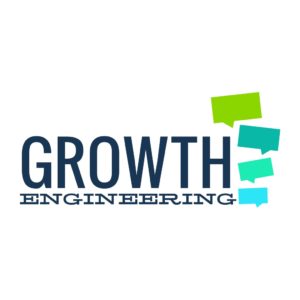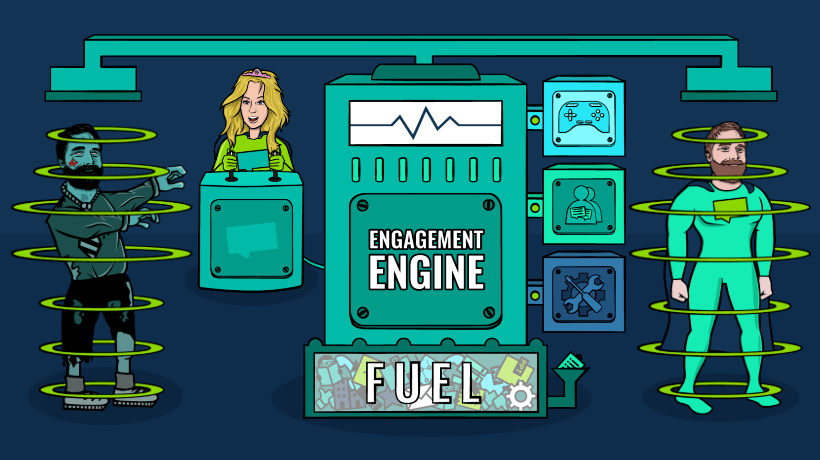9 Characteristics Of The NextGen LMS
The LMS used to be a fairly basic application. In the old days, Learning Management Systems were merely online portals that learners would visit and complete eLearning units, or access company documentation. Were they functional? Yes, they were. Were they effective tools for changing employee behavior? Not at all! On the whole, these proto-learning platforms were clunky, ugly, hard to use and universally despised by the employees. If that’s what you believe an LMS to be, then you might be a little behind-the-curve. LMS development has come along in leaps and bounds and you’d barely recognize a modern LMS if you saw it. Today’s Learning Management System is not just an eLearning platform – the NextGen LMS is a whole lot more…
1. A Better LMS
First off, today’s learning platforms are simply better at managing learning than the eLearning portals of old. The best LMSs have moved with the trends in technology as a whole. They’re now built on more robust frameworks, decreasing development times and reducing bugs. This gives LMS providers more flexibility when tailoring the product to the needs of each client.
LMS development has also taken account of aspects that might have been traditionally ignored. For example, things like user experience now matter more than ever and the best LMSs have gone through innumerable tweaks and improvements to make them as intuitive as possible.
2. Organizational Knowledge Aggregator
Older LMSs could comfortably deal with formal training content, but this overlooks the 90% of learning that happens through collaboration and experience. Today’s LMS providers have made the effort to capitalize on this informal learning and find ways to capture it.
Aside from offering more ways to learn, this practice has had other positive side-effects. Capturing informal learning has given organizations a way to build their intellectual capital. This organizational knowledge can now be used to create more relevant training resources on topics that might have been overlooked in the formal training program.
3. Enterprise Social Network
The same tools that let organizations capture informal learning also open up lines of communication between employees at all levels. Social learning platforms combine the qualities of an LMS with those of a social network. Although enterprise social networks exist, they don’t necessarily help organizations capture and retain intellectual capital.
Having social features on the LMS means there’s no need for a separate enterprise social network. Every employee registered on the training platform can use it to communicate with their peers and share their knowledge. Not only does this improve collaboration, it also gives learners a reason to return to the LMS and complete more training.
4. Mobile Learning Tool
Back when the internet was new and exciting, people would gladly spend hours sitting in front of desktop computers. Now that the novelty has worn off, that same desk can start to feel like a prison. With the meteoric rise of mobile technology, internet users are no longer confined to one place. They now prefer to use a mobile rather than a desktop if they want to use the internet.
As I’ve already mentioned, LMS developers aren’t slow in spotting trends. Today’s LMSs are optimised for mobile use, ensuring the same standards of usability are met across all platforms. Not only that, but learning apps have also been built specifically to give the best training experience on mobile devices.
5. Internal Marketing
In a lot of cases, the cause of ineffective training can be sourced to a fundamental issue – the learners simply don’t understand the point of the training. They can get full marks in the final assessment, but because the material doesn’t have any meaning, it’s soon forgotten and fails to have a positive impact.
The most innovative LMSs are now designed to communicate the vision and values of the organization as well as individual training objectives. The LMS providers have developed systems that can be customized and tailored to reflect the company’s brand and message. This level of consistency reinforces the meaning behind every item of training on the platform.
6. Employee Engagement Tool
It shouldn’t come as a surprise to anyone that employee engagement is a big problem. Training aside, poor engagement is responsible for low productivity, high employee turnover and lifeless company cultures. The sad thing is that these consequences exacerbate the issue of engagement, locking organisations in a downward spiral.
A NextGen LMS can break this cycle in many ways. Social features improve communication and give the employees a voice. Letting them share their knowledge gives them recognition for their expertise. Reinforcing the values of the company reminds the employees of what they’re working for. Combined, these benefits keep them returning to the LMS and keep them improving their knowledge and skills.
7. Rewards Center
‘What’s in it for me?’ seems to be the war cry of the upcoming generation of employees. There’s nothing wrong with that – they should be allowed to ask that question. It’s up to the employers to give them a satisfactory answer. Older LMSs have had problems with keeping learners’ attention and commitment. The LMSs of the future need to make it worth their while.
Gamification lets learners earn points for completing content, interacting with peers and sharing their knowledge. With a NextGen LMS, these points can act as a virtual currency on the platform. You can let your learners ‘buy’ anything from vouchers to holiday time. You can even let them use their virtual currency to fund their independent study, letting them take charge of their own development.
8. Performance Management Suite
The age-old practice of annual employee appraisals has had its day. It no longer works for today’s employees who seek constant, regular feedback and recognition for their hard work. Just like learning and development, performance should be an ongoing process, not simply an event that happens every now and again.
Applications exist allowing managers to track employees’ KPIs and align individual objectives with those of the organization. These are useful tools, but they lack a means of developing the employees’ skills to improve performance. LMSs of the future include their own performance management suites that tie together objectives, competencies, reviews and training in one streamlined process.
9. Internal Recruitment Solution
Any manager will tell you that recruiting new employees can be a long and painful process. It’s difficult enough to find people with the right blend of skills, but you also need to find someone who’ll fit with the culture of your organization. What if there was another way?
With the flexibility of a modern learning platform, the perfect person for that new opening might be closer than you think. For all you know, there’s somebody in your HR department with a secret, burning passion for marketing. You can use existing social features to promote vacancies internally giving everyone the chance to chase their dreams. You can even create a separate area on the platform just for job ads.
Final Word
If you’ve had the same old LMS for the last few years, I can forgive you for thinking it’s just an eLearning platform, but world of learning technology charged ahead while you weren’t looking. It almost seems like ‘learning management system’ isn’t a sufficient label anymore.
Maybe they should be called Engagement Engines!










